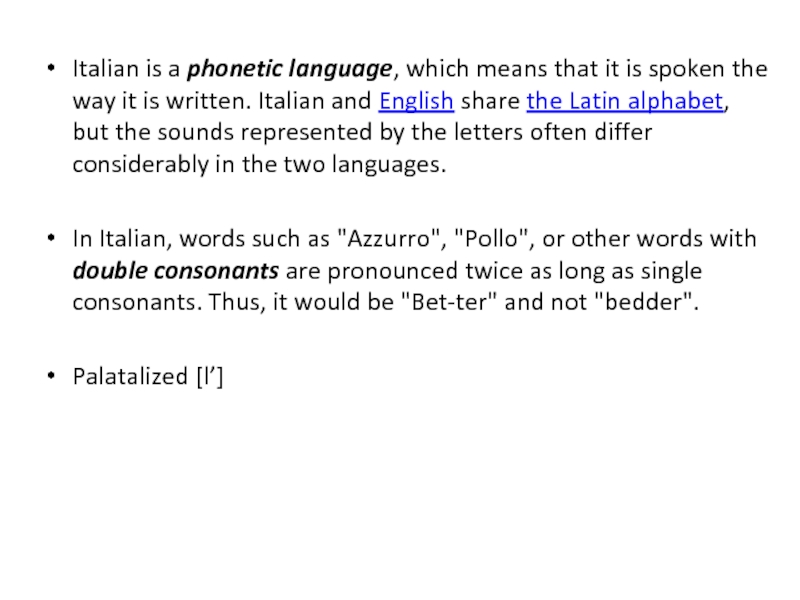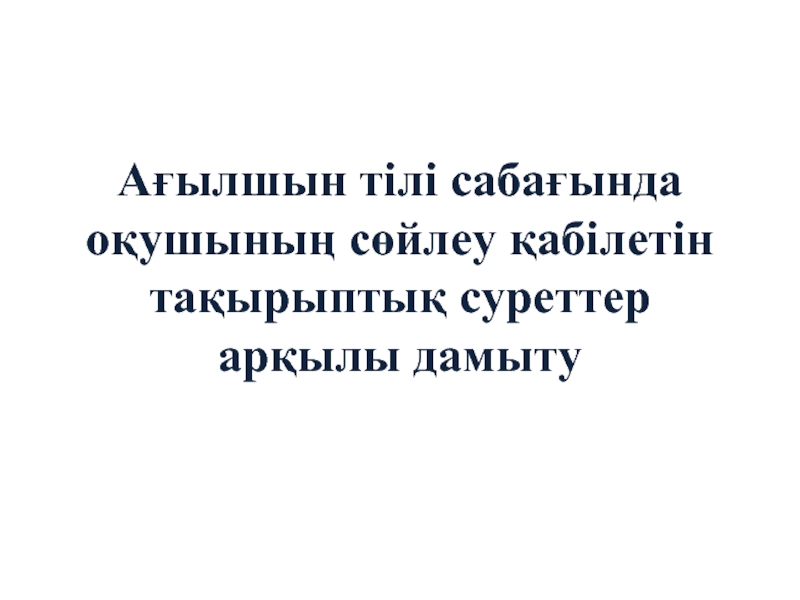- Главная
- Разное
- Дизайн
- Бизнес и предпринимательство
- Аналитика
- Образование
- Развлечения
- Красота и здоровье
- Финансы
- Государство
- Путешествия
- Спорт
- Недвижимость
- Армия
- Графика
- Культурология
- Еда и кулинария
- Лингвистика
- Английский язык
- Астрономия
- Алгебра
- Биология
- География
- Детские презентации
- Информатика
- История
- Литература
- Маркетинг
- Математика
- Медицина
- Менеджмент
- Музыка
- МХК
- Немецкий язык
- ОБЖ
- Обществознание
- Окружающий мир
- Педагогика
- Русский язык
- Технология
- Физика
- Философия
- Химия
- Шаблоны, картинки для презентаций
- Экология
- Экономика
- Юриспруденция
Italian accent презентация
Содержание
Слайд 2Oral posture
Trill your R’s.
[r] is different from the English [r]; it
is pronounced with one flip of the tongue against the gums of the upper teeth. This is the trilled r.
Слайд 3Oral posture
[e] – the sound of thinking, instead of English [æ].
NO
diphthongs.
“Go, I, play”
Dropped H’s
“I’m so happy to see you!”
Extra [ə] after the words.
“Do you like[ə] my new dress[ə].”
“Go, I, play”
Dropped H’s
“I’m so happy to see you!”
Extra [ə] after the words.
“Do you like[ə] my new dress[ə].”
Слайд 4Oral posture
Dentalized [th].
Many Italians have some difficulty in pronouncing the
English "th", and so pronounce it as either "t" (as in "Think"), or "d" (as in "The"), respectively. It does not exist in Italian and is hard to acquire as an adult, especially as substitutes work perfectly well.
American accent.
For how Italian mouth works, it is easier for them to pronounce American words.
e.g. The letter [r]
No aspiration.
American accent.
For how Italian mouth works, it is easier for them to pronounce American words.
e.g. The letter [r]
No aspiration.
Слайд 5Syllable stress falls differently in the two languages. By default, Italian
stresses the penultimate syllable (though there are numerous exceptions).
Слайд 6Italian is a phonetic language, which means that it is spoken
the way it is written. Italian and English share the Latin alphabet, but the sounds represented by the letters often differ considerably in the two languages.
In Italian, words such as "Azzurro", "Pollo", or other words with double consonants are pronounced twice as long as single consonants. Thus, it would be "Bet-ter" and not "bedder".
Palatalized [l’]
In Italian, words such as "Azzurro", "Pollo", or other words with double consonants are pronounced twice as long as single consonants. Thus, it would be "Bet-ter" and not "bedder".
Palatalized [l’]

![Oral postureTrill your R’s.[r] is different from the English [r]; it is pronounced with one](/img/tmb/3/233056/7530da7c912796cac0d0e11dc6b496a8-800x.jpg)
![Oral posture[e] – the sound of thinking, instead of English [æ].NO diphthongs.“Go, I, play”Dropped H’s“I’m](/img/tmb/3/233056/b953943047743dc5313a495331a33af0-800x.jpg)
![Oral postureDentalized [th]. Many Italians have some difficulty in pronouncing the English](/img/tmb/3/233056/797b461c6429b12dc4adc1c9a2891406-800x.jpg)







